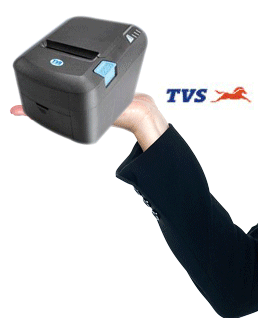History of Barcode
Published on: 22 May, 2020 | 11:11:06 AM
he first patents for a bar code type product (US Patent #2,612,994) was issued to inventors Joseph Woodland and Bernard Silver on October 7, 1952. Its implementation was made possible through the work of Raymond Alexander and Frank Stietz, two engineers with Sylvania (who were also granted a patent), as a result of their work on a system to identify railroad cars. It was not until 1966 that barcodes were put to commercial use and they were not commercially successful until the 1980s. While traditionally barcode encoding schemes represented only numbers, newer symbologies add new characters such as uppercase letters, or even the complete ASCII character set. The drive to encode more information in combination with the space requirements of simple barcodes led to the development of matrix codes (a type of 2D barcode), which do not consist of bars but rather a grid of square cells. Stacked barcodes are a compromise between true 2D barcodes and linear codes (also known as 1D barcodes), and are formed by taking a traditional linear symbology and placing it in an envelope that allows multiple rows.



